Adam Tendler's Blog, page 4
October 16, 2018
rest in radicalness, takehiga kosugi...
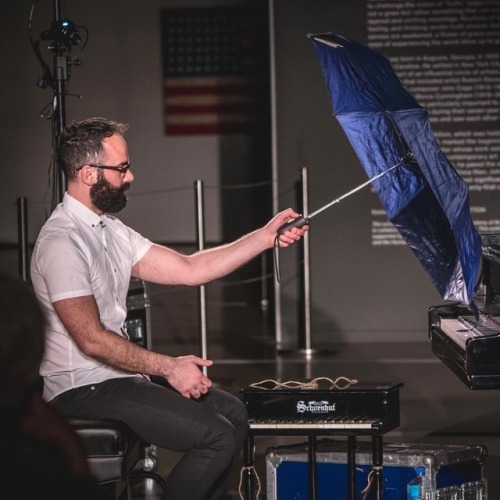
rest in radicalness, takehiga kosugi
https://www.instagram.com/p/BpAGxX3HEJG/?utm_source=ig_tumblr_share&igshid=1b4t8k2hwvb8v
October 11, 2018
tom johnson, 1973, septapede....
View this post on InstagramA post shared by Adam Tendler (@adamtendler) on Oct 11, 2018 at 6:03pm PDT
tom johnson, 1973, septapede. #thrasher
https://www.instagram.com/p/Bo0Fqr0H8u1/?utm_source=ig_tumblr_share&igshid=nqsrp3e80irg
October 1, 2018
more proofs arrived today #prouddad #childnumbertwo...
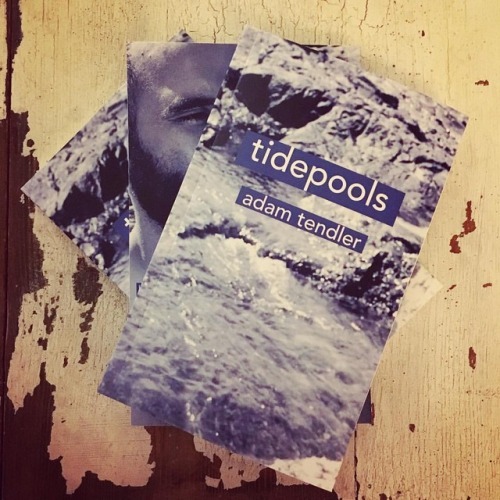
more proofs arrived today #prouddad #childnumbertwo #
more proofs arrived today #prouddad #childnumbertwo #
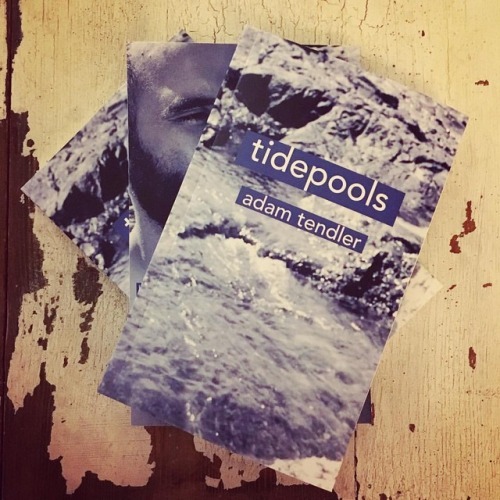
more proofs arrived today #prouddad #childnumbertwo #
more proofs arrived today #prouddad #childnumbertwo #

more proofs arrived today #prouddad #childnumbertwo #
more proofs arrived today #prouddad #childnumbertwo #

more proofs arrived today #prouddad #childnumbertwo #
September 29, 2018
two thoughts • certain mirrors and lighting make me think i have the hairiest ears i’ve seen on a...
• certain mirrors and lighting make me think i have the hairiest ears i’ve seen on a human. it only happens sometimes though, like in this southwest airplane bathroom. i just wonder, is this a defining physical characteristic of mine that literally everyone notices but that i never have? i think of my grandfather’s ears.
• rattled, like so many, from the last 48 hours of politics and its gross spillover into cultural warfare and personal triggers—particularly the maddening sight of people who have clearly never experienced abuse smugly lecturing about why and how to litigate blame and prosecution. and persecution. it’s interesting where the mind goes at 4am when one wakes up for an early flight. today, is tumbling around, i still couldn’t stop thinking about the contrast of Dr. Ford acting as her own expert witness, describing memory function and the hippocampus, while Kavanaugh shrugged, argued, threatened (“what goes around comes around!”), conjured stories about left-wing (as in, the majority of voters in the last presidential election?) conspiracies, “quarter games” (?) and other sloppy insults to everyone’s intelligence while under oath. And for many, this passed as a clear case of he-said-she-said.
September 24, 2018
Adam’s Back-To-School Guide to Piano Lesson Books
Last winter I met the composer Daniel Felsenfeld for coffee across from Juilliard, where he teaches. His daughter takes piano lessons, and I inquired about her books. Within minutes, I was down the rabbit hole, expounding my thoughts regarding certain publishers and methods, often stopping to confess with embarrassment that I knew way too much. But after ten years of watching kids interact with this particular repertoire, I’ve indeed formed some opinions. He told me that I should write some of them down to share with others. “I know I’d appreciate it,” he said.
Now, at the start of a new teaching year, as I begin having similar conversations with curious grown-ups, this is a quick attempt to collect those thoughts. My focus is on piano method books geared toward young beginners. It is not a survey of suites written by composers for children, or on the theme of childhood, even if those works are “easy.” It’s going to be off-the-cuff, rushed, incomplete, brash, and other teachers may disagree. This is meant for adults, and meant to be fun. Enjoy!
Bastien
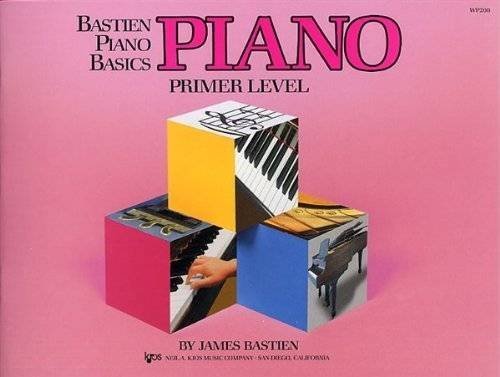
I like Bastien books for literally two volumes, and then things get weird. I recommend the Primer A and Primer B for very young beginners because the pictures are cute, the notes are big, and it hovers in the same couple of hand positions, focusing on fingers that feel comfortable for young beginners (thumb, pointer and middle) for quite awhile with a lot of “floating note” pieces before it introduces the staff—and even then, the same positions apply. This might sound mindless, but it can give a kid a real sense of momentum and achievement. Plus, a lot of the time they actually are reading what’s in front of them, which is a big deal. Funny enough, within the first couple pieces of Primer B, the book introduces eighth notes, which is relatively early as methods go. (I think it takes Alfred and Faber a couple levels for that to happen). So for VERY young kids, suddenly telling them to subdivide and say “and” between every beat (and what’s a beat?) can be tricky.
But even still, the Primer A & B seem really well-paced. Then Level 1 comes along and gets really hard really fast. I have no idea why. By the middle of Level 1, many kids get in the weeds and teachers start just showing them what to do. Not great. I recommend swinging out of this series after the Primers. Also, the music gets, in my opinion, worse and worse from Level 1 onward.
Alfred
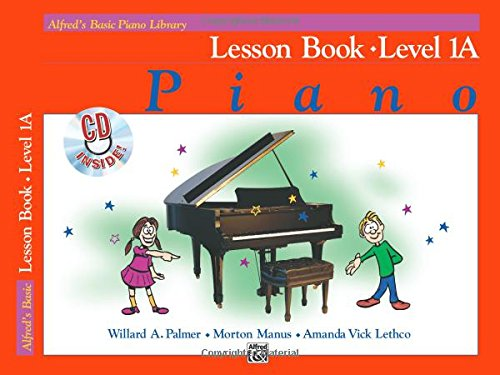
Aw, Alfred! So Alfred was one of the series that I learned from as a kid! I totally remember the pieces, the pictures, and the progression from book to book (though mine looked different, #old). I usually choose Alfred sparingly with young beginners because I think it starts difficult. For instance, it has both hands in a “C position,” meaning the left hand pinky on the lower C, within the first few ‘floating note’ pieces. For a lot of young kids, that can feel pretty disorienting (Bastien starts with both thumbs on middle C). I find the layout of some of these early pieces a little confusing too, and sometimes kids (and their grown-ups!) have a hard time following what to play and when, or if hands are playing together or separately, and so on. The notes themselves are also much smaller (more like regular sheet music) than in Bastien. Then—okay last negative thing—the book introduces the bass clef by explaining… the F line, which, okay sure the bass clef is the “F clef,” but for a lot of young people the whole thing can be a head-scratcher. It sort of expects a student to internalize the grand staff in a page, which never happens. So, to compensate, teachers will perhaps just show how to do it, and kids can find themselves out on a limb before long, not quite getting why they’re playing what they’re playing. “Because that’s the F line!” a teacher might shout into a chasm of indifference.
I think musically Alfred is better than Bastien, especially as the series progresses, but therefore a student faces certain musical and technical challenges, and their teacher will have to exercise a great deal of patience explaining, responsibly demonstrating, and staying cool and compassionate in the process.
If a student seems really motivated to learn, and seems to absorb musical concepts quickly in their first lesson, I might to go with Alfred. But I think of it as one of the steeper curves up when compared to the other publishers.
Faber
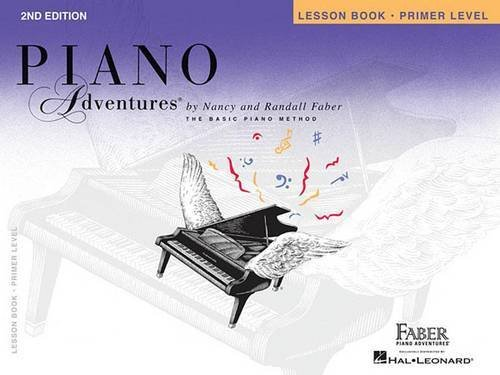
Faber / Piano Adventures seems to be a major go-to right now. Like most of these series, you can get a bunch of coordinated books per level—lesson, performance, theory, technique, pop, holiday—which can get a little overwhelming. I would say to get the Lesson and Performance book for each level.
Faber in general likes to switch up the positions, even in the earliest primers, which makes it very different than Bastien or Alfred (which favor one or two positions for a majority of the early books). I like this philosophy, because it helps prevent students from thinking C = thumb, or F = 4th finger, etc. Faber’s fill-in-the-blank method of inviting students to figure out the positions themselves also makes for healthier learning and a kind of positive “muscle confusion” (to borrow gym lingo) from piece to piece. Also, the music is generally quite good. I don’t love Level 2A (that’s the low-point of the series for me, and where it also incidentally tends to get harder for a lot of students), but I somehow really enjoy 2B and 3, mostly for musical reasons.
Some drawbacks: About those changing hand positions, I’ve found that in the primer-level books, the material tends toward the middle three fingers (pointer, middle and ring), which can be really uncomfortable and confusing for young kids, and then it later introduces the staff with pieces that involve the pinky and that damn F line in the bass clef. Again, that’s well and good for a lot of students, but if a child is like 4 or 5 years old, it can be really tough to coordinate physically. I had one kid who just couldn’t do what the book asked, and it manifested in all sorts of bad behavior and resistance. I switched to Bastien (which again is pretty thumb-focused) and they were so happy! Everything changed.
A colleague introduced me to a couple Faber primers before the official (purple) Primer pictured above, and I’m totally into them—and they’re particularly great for the youngest students. My First Piano Adventure Primer A and its sequel, Part B are total winners, and I’ve heard that the included CDs are also great. Part B would even work well for beginner adults who want to just work on note-reading. Also, in those pre-primers, the notes themselves are HUGE, with nice teacher-duets and cute, colorful pictures featuring children of all ethnic backgrounds.
Like a lot of kids books, the material in the very beginning of these primers is sort of confusing to me, and not very musical, so I tend to skip those opening exercises. My rule is, “If I can’t figure out what the book is asking the student to do, then I can’t expect them to figure it out either.” Also these exercises/games can puzzle most students because they frankly don’t sound like anything.
Thompson
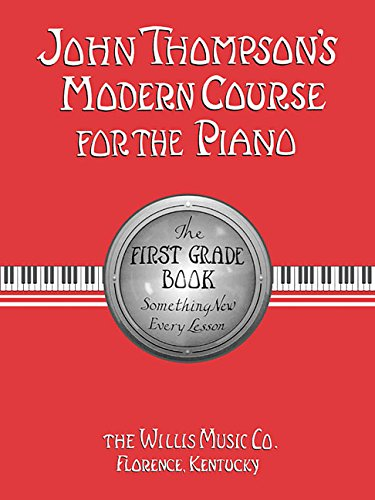
Kill this with fire. ☝️
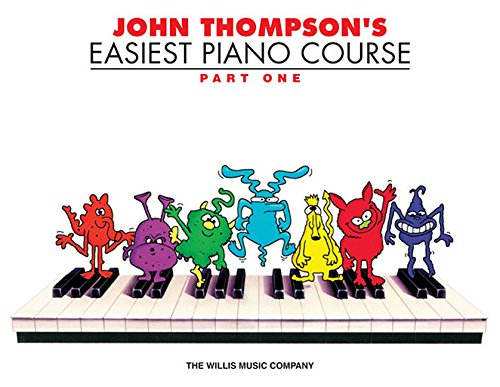
Hate this one, too. I’m sorry. So, if the red Thompson series above is completely dated both musically and graphically (which it is), as well as far too advanced out-the-gate for any beginning student, the Easiest Piano Course (above) and its evil sibling, “Teaching Little Fingers to Play” also can’t quite get it right. I find that musically the pieces make no sense, and are generally either too hard or too boring. It’s like a MIDI computer generated everything about the book. Finally, this series can’t help but to gravitate toward strangely racist tropes. I have a very early incarnation, like from the 1950s, of the above Easiest Piano Course and it’s almost unspeakably racist with its pictures and titles (“The Jolly Tar,” “Cotton Pickin’ [whatever]” etc.). I can’t teach out of it. I’ve shown parents and their jaws have dropped. But even now, the series has merely replaced the cartoons of minority stereotypes with minority stereotype ALIENS, and some of the titles are still eyebrow-raisers (“In a Rickshaw”). Again, it’s truly like they can’t help themselves. I only teach out of this book if a student comes to me from another studio and they’re already working from it, and it’s not long before I boot it.
Pageants for Piano (Donald Waxman)
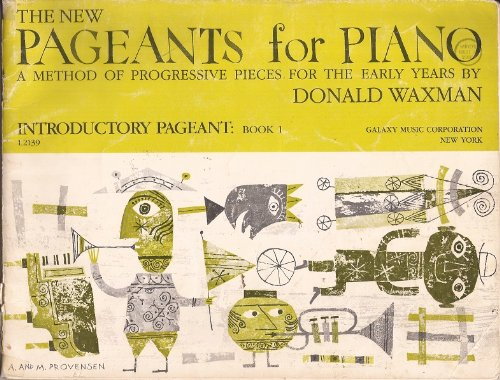
LOVE Waxman, but wow this series is capricious in terms of availability. Sometimes on Amazon the above book with be like $10 and Prime-able, then the next day it will be $400 from a third party! I have no idea what’s going on here. Right now it’s listed at over $200.
But the Waxman Pageants are totally cool—kind of hippyish modern music for beginners. There are two volumes of Level One: the Introductory Pageant (above, yellow) and Book 1a (a mere FIFTY dollars). Neither book has teacher duets (I think there’s one proper duet in Book 1a). But indeed somehow even the simplest pieces really do stand on their own musically. Both books start with very straightforward, nearly single-note / single-system (one line) pieces, but soon evolve into longer, pretty satisfying works. The unusual pictures also get a laugh from kids, and spark their imagination. Waxman tends to place in the upper right corner of each page any new concept that appears in a piece (say, an eighth note, or a dynamic marking) trusting that the teacher will do the explaining. This is actually okay, in my opinion. The difficulty of these books spike about halfway through, so a student’s progress will typically slow down, but if you can get a copy of either one, they’re worth having. Book 2 is also fantastic from a musical standpoint.
Music for Little Mozarts
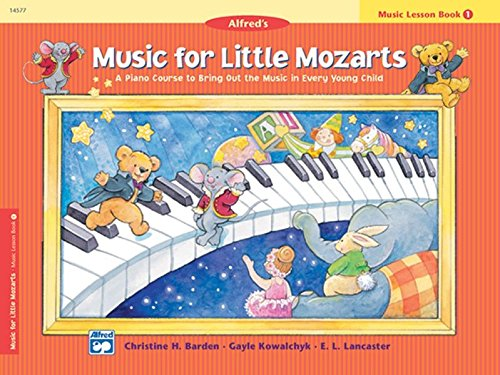
CUTE! I like this series! I’ve used Little Mozarts for very young kids, mainly because the music is super simple for a student, but the teacher accompaniment is totally florid and rather pretty, so the combination can make for happy times in a lesson. Also, a story about Beethoven Bear, Mozart Mouse and their gang of magical musical toys guides the student from piece to piece (if their teacher is willing to read the story—which I am!). As with other children’s books, the first few pages are so concerned with familiarizing a child with the piano through all these crazy exercises that I find it very confusing! Also, the introductory story on the first pages is like… VERY long and not necessarily interesting. So I kind of start a few pages into the book. Maybe I’m lazy.
Both Book 1, and Book 2 and Book 3 (to my recollection) stay typically in the same position, mostly poking at a student’s recall by starting on different notes in the same position. This is unlike Faber, which actually has a student’s hand moving to different spots around the piano. I find that the difficulty spikes around Book 3, but mostly if a student is still thinking in terms of hand position and finger numbers and has yet to grasp notes on the staff. If they’re truly reading at that point, it should be fine. Like the other publishers, the Lesson Book is just one in a line-up of books for each level (Workbook, Recital Book, etc.).
Deep cut fact: there are older editions of this series, and in Book 2, if you have the older version, things get really dark with Clara Schumann Cat and Beethoven Bear. There’s a whole backstory of her failed career as a recitalist (seriously)—this, while Beethoven Bear struggles with issues of identity, rejection and acceptance. It’s so good! I plan to have a concert reading/performance of this entire series.
Mikrokosmos

Daddy’s here. Mikrokosmos time. Honestly, though, as much I adore Bartók’s Mikrokosmos, I can’t say that I wholeheartedly recommend it as a teaching tool for all students. It really takes a certain type to embrace the Mikrokosmos. Some kids really dig them, and others—most others, in fact—will kind of puzzle over them or outwardly resist. Don’t push it! Liking the Mikrokosmos is not an intellect test. I mean, this is a rather austere music, and the approach, while pragmatic, is a bit obtuse. I know of some teachers who, for reasons of pride (or snobbery) will ONLY teach out of the Mikrokosmos. Anything else would be unthinkable! Alfred? Bastien?! (clutches pearls, faints) Well, frankly I feel for their poor students! Kids should have fun at the piano while they learn, and if the Mikrokosmos aren’t delivering that experience, then move on. There is more to life, and to piano lessons, than this one piece that Bartók wrote for his son, and I think kids should have options.
THAT SAID, this is a monument in the history of piano pedagogical writing, and everyone should have multiple copies, including one for their nightstand. Adults really take to them. The difficulty spikes precisely at No. 10 in Book One, “With Alternate Hands,” and continues climbing from that point on. (I’m performing Books 1-3, as well as Bartók’s Etudes Op. 18, in a free show at Third Street Music School Settlement on February 8th at 7pm).
Dozen a Day
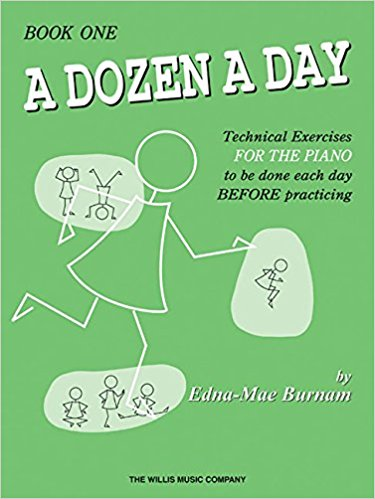
Sorry not sorry I hate these. I totally don’t get this series and have never taught out of it, except when substituting other teachers’ lessons, and then I still don’t get it. Also the [completely unmusical exercises] get kind of difficult rather fast, and need a certain amount of explaining, thus ceasing to be “before practice” exercises, but rather actual things that kids need to practice… but then don’t. So for me it’s a no. Byegirl.
Step By Step
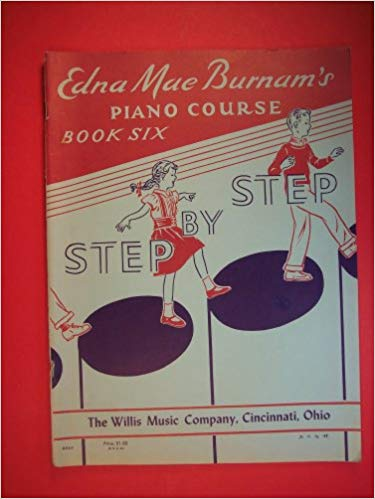
Yes, I just ragged on Edna Mae Burnam’s Dozen-a-Day, but I did learn out of her incredibly dated Step-By-Step series when growing up. I still have every copy of each level. I’m not sure if the new incarnation of the series is as old-fashioned as the one pictured above (and the ones that follow), but as an adult I’ve grown to actually like the Step-By-Step books (I still use my old ones in lessons), even though as a kid they were torture. These books start a student off right at Middle C—that is, in this method the student reads from the musical staff in their first lesson. No floating notes or anything like that. (Same with the Waxman Pageants books.) And the way it introduces Middle C, and how it can appear in both treble and bass clef is… well, pretty good! This is the one series that actually starts in a way that’s not totally baffling, with weird games and exercises and pattern plays, which is ironic because it arguably starts in a more advanced place. It’s like, “Here’s Middle C. Here’s what it looks like. Now play it. Play it a lot.” I respect that.
Celebration Series / Royal Conservatory

This series, which comes from the Royal Conservatory system, doesn’t really belong here because it’s just a collection of pieces. But I’m bringing it into the discussion because it shows up in lessons. If a student is already rather advanced but not responding positively to any method book, Royal Conservatory can actually provide a less-structured bank of reasonably short repertoire for them to explore. Prep A and Prep B, not to mention Level 1, are not at all the same in difficulty-level as their namesakes in lesson/method books like Alfred or Bastien. These pieces are more complex and demanding. One teacher described it as: Prep B in Royal Conservatory = Level 3 of Faber. That’s probably pretty accurate, though Prep A here does have a piece that Faber includes in its Book 1 (“The Haunted Mouse”). So there’s some overlap, but they’re still not on equal planes. Also, no pictures. Each level has a technique book, an etude book, and so on, so a teacher could theoretically create a curriculum for their student based on this series. It’s just tougher, though. For everyone.
Suzuki
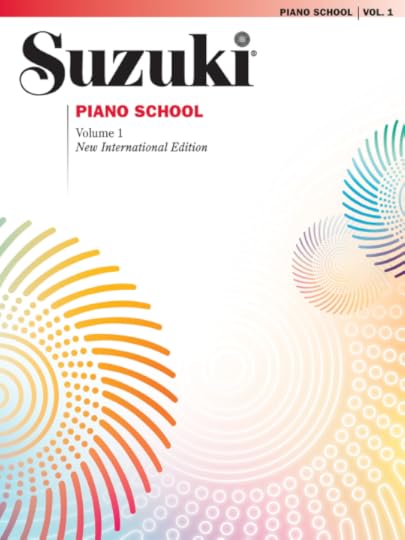
Murder Death Kill! Get it away from me. It also doesn’t belong here, because like the Royal Conservatory books, it’s really a collection of semi-grown-up pieces with no incremental method within each book. Here’s how it goes with these books in my experience: I get a student who purports (or whose parent purports) that it was their book and that they “finished it.” I open the book to see page after scribbled page of teacher markings. I ask the student to play a piece from it and they do. I ask the title. They don’t know. I put Primer A of Bastien/Alfred/Faber in front of them and they have no idea what Middle C is. Then we start over and everyone’s mad at ME. Seriously, this book, or the pieces therein, should only come after a student knows how to read, or with VERY careful, pragmatic Suzuki instruction from a committed professional alongside committed parent involvement. Otherwise, get it out of here!
FOR THE TEENAGER
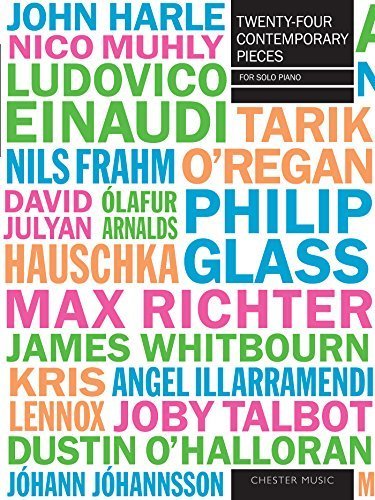
For people who know how to read music at an intermediate to early-advanced level, and who just want some pretty music to play that goes beyond Catherine Rollin (who I love—don’t come for her), I’ve found some nice options that can get the job done. These excellent Chester Music compilations—one (pictured above) came before the other (which claims to to be ‘easy’)—include quality music by actual composers. It’s music that sounds nice, feels nice, and in some cases just skirts the razor’s edge of new-age. Fine! Also, any of the more well-known names you see above likely have their own piano book collections (Dustin O’Halloran, Max Richter) which similarly can present an intermediate student with satisfying pieces that give them an expressive rush. (Yann Tiersen’s newer piano book, however, is pretty difficult.) This year, I’ve also enjoyed exploring a funky, often quite beautiful collection by Michael Proksch, called Piano Poetry, published by Breitkopf and Haertel, which I bought on a whim at the Juilliard Store, and have already used in a handful of lessons.
FOR THE ADULT
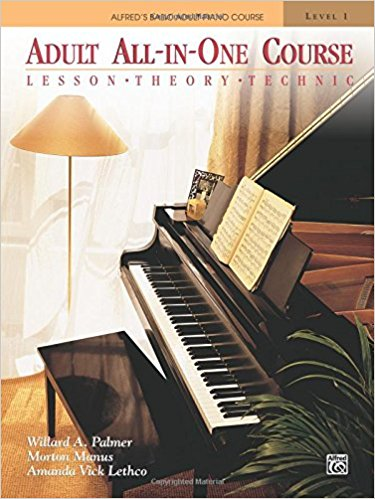
Sorry adults, but your books suck. It’s so sad and strange. Alfred, Faber and Bastien all have adult books, which take an accelerated approach, combining lesson material with theory and short pieces of music. (That said, I’m curious about this adult Faber book that actually still calls itself Piano Adventures, and still goes in levels. I might need to check it out.)
I’m not a hard-no on these books, but they can move so quickly that adults can feel lost. The biggest bummer is that the music usually really, really stinks (“When the Saints Go Marching In,” etc.) and I can just tell when teaching out of them that this is not how or, more importantly, why a particular adult wanted to sit at the piano and learn to play. Still, one can use these books as a kind of “center rail” from lesson to lesson, just so an adult student has something to chew on and accomplish each week.
That said, I’m the first to tell an adult to (get a copy of Mikrokosmos, and) seriously buy a couple kids books! The only difference between most adult books and their kids counterparts is PICTURES. Truly, that’s it. And if anything, the kids books work better because at least they move more gradually and incrementally than adult books. So I’m all for it, but it takes a certain releasing of an adult student’s ego to open up My First Piano Adventure and play “Tub Time.”
I would also tell adult students to check out the books listed above in my Teenager category (including Catherine Rollin), just to give them that piano-playing happy-place fix. The instrument should, and can serve as a vessel for expression and joy, even for beginners. If a beginner wants to explore pop music, I would say to makes sure the book is marked EASY, because most pop songbooks are actually super complicated in their attempt to faithfully recreate the rhythms and textures of songs that were either never intended for piano, or that were improvised at the piano by an artist and then transcribed later by someone else.
____________
That’s sort of it, for now! I’ll keep nudging this post as things come to me, so feel free to check in with it again. The short link is: bit.ly/adampianobooks. And if you’d like any more information or further recommendations, feel free to email me through my website.
September 23, 2018
referred to this Mikrokosmo as “my precious” to an adult student...
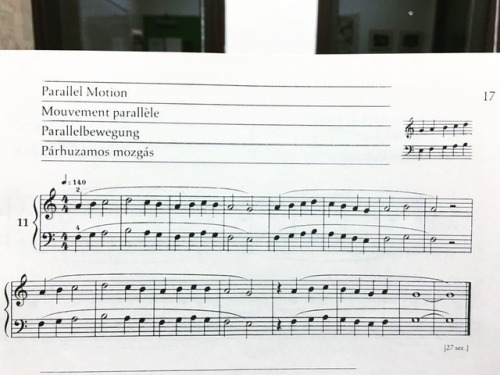
referred to this Mikrokosmo as “my precious” to an adult student the other day. seriously, favorite. books 1-3 in march (free show). complete mikrokosmos in concert next year. #yesway
https://www.instagram.com/p/BoFQMZSnHwC/?utm_source=ig_tumblr_share&igshid=kbi8rg2vbcf6
September 14, 2018
visiting an icon. kids, recognize: rorem did it first....
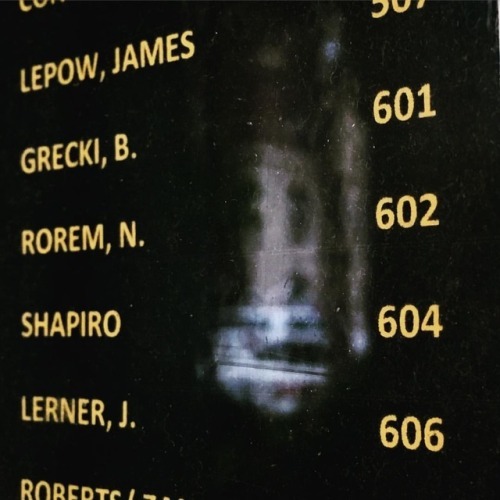
visiting an icon. kids, recognize: rorem did it first. ✌



